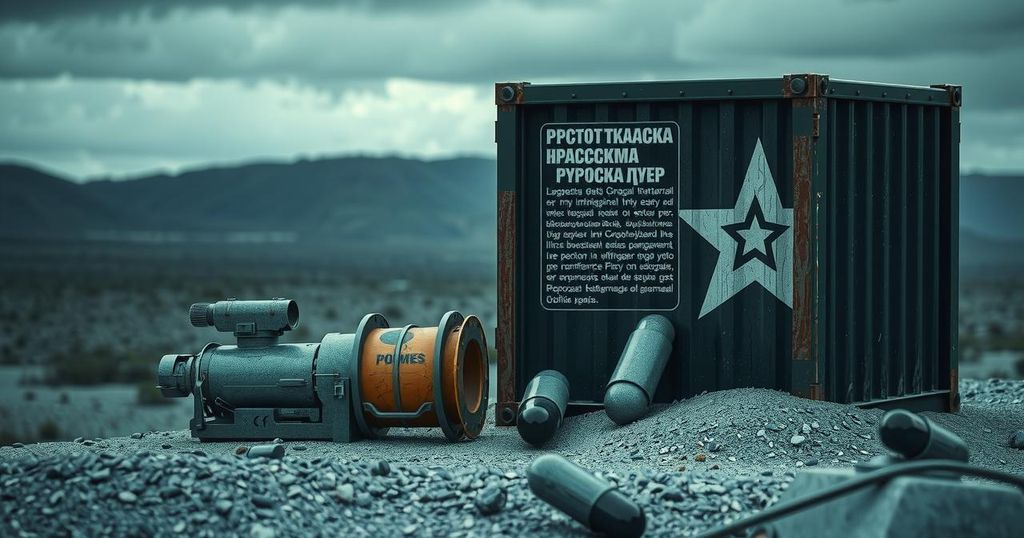Moscow Launches New Disinformation Campaign Targeting Ukraine
- Russian intelligence attempts to fabricate nuclear trade claims.
- Alleged nuclear capsules raise doubts due to labeling inconsistencies.
- Container contents include unrelated items, undermining claims.
- Historical context shows a pattern of recycled disinformation efforts.
- Ukrainian officials call for a firm international response.
Misinformation About Nuclear Materials in Syria
In a worrying development, the Defense Intelligence of Ukraine has accused Russian intelligence services of perpetuating another series of false narratives about Ukraine aimed at undermining its international reputation. This latest campaign includes fabricated claims alleging illicit trade of nuclear materials, supposedly occurring within Syria. The Ukrainian Defense Intelligence reports that these includes unfounded accusations of military equipment allegedly sourced from Ukraine’s Ministry of Defense, suggesting a systematic effort to reshape public perception on the global stage.
Container Discrepancies Raise Eyebrows
At the center of this story is a suspiciously unearthed container said to hold nuclear capsules visibly labeled PU.94244U and U.92. These identifiers suggest the presence of plutonium and uranium, yet experts highlight that the contents have yet to be verified, and the labeling does not comply with recognized nuclear material handling standards. Further analysis reveals that the container appears to be poorly constructed, featuring an unreadable Cyrillic inscription and a makeshift application of a Ukrainian Air Force logo. This sloppy presentation is consistent with other low-quality prop schemes observed in previous Russian disinformation campaigns.
Dubious Items in the Container
The contents of the alleged container include one capsule marked PU 94244U, which refers to an exceptionally rare plutonium isotope that is found in trace amounts on Earth. Additionally, the presence of an unrelated wristwatch inside the container further calls into question the legitimacy of the claim. The disinformation also features a dated Soviet-era chemical reconnaissance device, with narratives suggesting it was procured from supposed Ukrainian military personnel for chemical and radiation protection operations in Syria. These claims echo earlier disinformation tactics, repurposing narratives that assert Ukrainian military involvement abroad.
Video and Historical Context
Moreover, a video promoting this misinformation carries an Arabic-language timestamp reading “13.03.2025, Thursday,” seemingly aimed at giving this narrative an impression of legitimacy and timeliness. The Defense Intelligence emphasizes that both the container and the associated scientific equipment appear to be repurposed artifacts from past Russian propaganda efforts. This is not the first instance of such claims; earlier in 2023, a blog post made similar allegations regarding a Ukrainian container containing plutonium, which Russian sources later manipulated to portray Western attempts to tarnish Russia’s image regarding chemical weapon usage.
Calls to Action Against Disinformation
Andriy Yusov, a spokesperson for the Defense Intelligence, has asserted that this operation is clearly designed to discredit Ukraine internationally, especially affecting its standing with both Syria’s current leadership and broader global partnerships. Yusov was quoted expressing concern that, “This is another Kremlin attempt to damage Ukraine’s reputation while manipulating the topic of global nuclear security. The free world must respond firmly to these deceptive tactics.”
In summary, Russian intelligence is once again invoking disinformation tactics with its attempts to link Ukraine to the illicit trade of nuclear materials in Syria. Despite clear signs of fabrication, such as poorly labeled containers and unrelated items, these narratives can still influence global perceptions. With officials like Andriy Yusov emphasizing the importance of responding decisively, it remains crucial for the international community to recognize and counteract these misleading propaganda efforts.




Post Comment